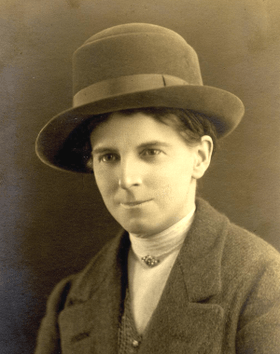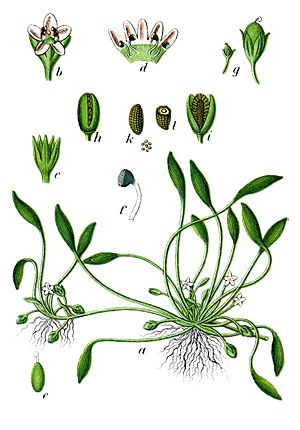Eleanor Vachell facts for kids
Quick facts for kids
Eleanor Vachell
|
|
|---|---|

Eleanor Vachell circa 1930
|
|
| Born | 1879 Cardiff |
| Died | 6 December 1948 (aged 68–69) Cardiff |
| Occupation | Botanical collector |
| Awards |
|
Eleanor Vachell (1879–1948) was a Welsh botanist. She is best known for finding and studying plants in Glamorgan, Wales. Eleanor also had a special connection with the National Museum of Wales. She was the first woman to be part of its Council and Court of Governors. Today, the museum keeps her botanical diary, notes, books, and plant samples.
Contents
Early Life and Plant Discoveries
Eleanor Vachell was born in Cardiff in 1879. She was the oldest child of Winifred and Charles Tanfield Vachell. Her father was a doctor and also loved studying plants. From a young age, Eleanor joined him on trips to find plants. They traveled across the UK, Ireland, and even to places like Brittany, Norway, and Switzerland.
When she was twelve, Eleanor started a special diary for her plant adventures. She used this diary throughout her life to write about her trips and what she found. Her big goal was to see every plant species known in Britain in its natural home. She would color in pictures in a reference book as she found them. This helped her gain amazing knowledge about plants in the UK and Ireland. It is thought she saw all but thirteen species during her lifetime.
Her Work with Plants
Starting in 1903, Eleanor Vachell helped prepare the first book about the plants of Glamorgan, called the Flora of Glamorgan. She was the honorary secretary for this project. A. H. Trow, a botany professor, encouraged her work.
Eleanor helped a lot with this book. She also kept records of new plant finds in Glamorgan. She wrote many articles for the Transactions of the Cardiff Naturalists Society. She was the first woman to join their Biological and Geological Section. Later, in 1936-37, she became the society's first woman president. In 1917, she was made a Fellow of the Linnaean Society. This is a very respected group for natural scientists.
Eleanor was also a member of the Wild Flower Society. She went on plant-hunting trips with friends who shared her interest. Her diary describes these trips and her companions. In 1926, the British Museum asked her to look for the Ghost Orchid. This is one of Britain's rarest plants. The National Museum of Wales only had a small piece of this plant that Eleanor had collected. In the 1930s, she also discovered a new hybrid plant, Limosella aquatica x subulata, with Dr. Kathleen B. Blackburn.
From 1921 to 1948, Eleanor wrote a weekly column about wild flowers for the Western Mail newspaper. In the 1920s, she also gave talks about wild flowers on BBC radio.
Other Important Activities
During both World War I and World War II, Eleanor paused her plant studies. She chose to do important volunteer work instead. She was a dedicated churchwoman and very active in the Red Cross. She became a Commandant and then a Vice-President there.
In World War I, she worked as a VAD at a military hospital in Cardiff. During World War II, she helped lead the Women's Land Army for Glamorgan. She also managed the library at Rookwood Hospital in Llandaff.
Her Lasting Impact
Eleanor Vachell passed away on December 6, 1948. H. A. Hyde, who was the keeper of botany at the National Museum of Wales, said she greatly helped younger botanists. He noted that she always shared her knowledge freely.
She left her collection of dried plant samples, called a herbarium, to the National Museum of Wales. This collection, which she built with her father, is now called the C. T. & E. Vachell herbarium. She also left her diary, books, notes, and money to help care for her collection. Her will also set aside money to help other amateur botanists and to publish a future "Flora of Glamorgan" using her writings. In 2012, she was one of thirteen women honored in an exhibition. It was called "Inspirational Botanists – Women of Wales" at the National Botanic Garden of Wales.
When you see the name Vachell after a plant's scientific name, it means Eleanor Vachell was the person who first described or named that plant.
See also
 In Spanish: Eleanor Vachell para niños
In Spanish: Eleanor Vachell para niños


